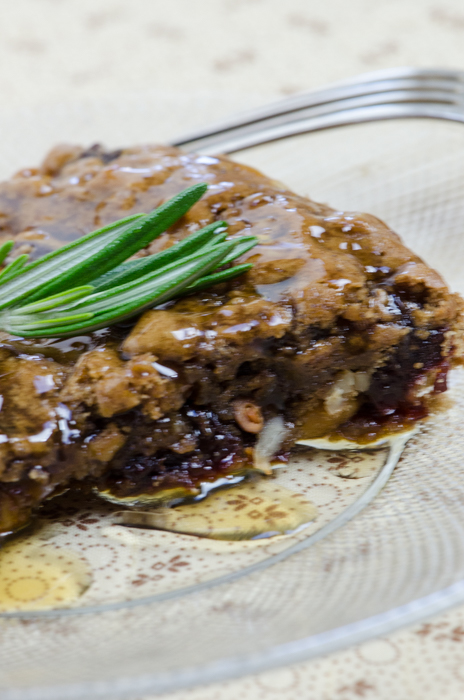 Chestnuts are found throughout Italy, and have been a staple of their cuisine for thousands of years. Fall in the Piedmont region, where we explore on our Barolo Walk and Wine tour, The chestnut was once also called “bread of the poor” and represented an important food for the populations of the Alpine valleys of this region. In mountainous areas of Italy, from Trentino and Alto Adige to Tuscany, chestnuts are one of the few crops that can be grown on steep slopes, as well as produce during colder winter months. In some of these areas, the economy revolved around the chestnut, as people gathered them in the fall and worked throughout the winter to sort, dry and sell them.
Chestnuts are found throughout Italy, and have been a staple of their cuisine for thousands of years. Fall in the Piedmont region, where we explore on our Barolo Walk and Wine tour, The chestnut was once also called “bread of the poor” and represented an important food for the populations of the Alpine valleys of this region. In mountainous areas of Italy, from Trentino and Alto Adige to Tuscany, chestnuts are one of the few crops that can be grown on steep slopes, as well as produce during colder winter months. In some of these areas, the economy revolved around the chestnut, as people gathered them in the fall and worked throughout the winter to sort, dry and sell them.
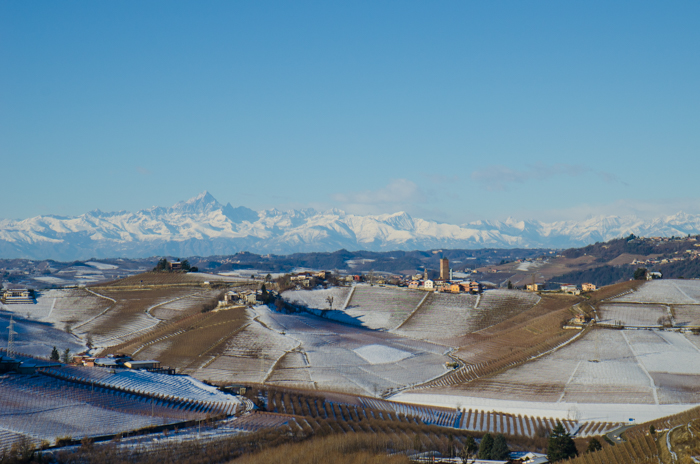 Chestnuts were traditionally dried to preserve them. A small, two story hut was built, and the chestnuts were laid out in the top story; a fire was started in the lower story, under a large stone shield that protected the crop and the building itself from the heat of the fire. The fire was kept going continuously, the heat drying the nuts and the smoke would rid them of the worms that could infest and ruin an entire crop. During colder evenings, entire families would gather in the roasting hut to enjoy the warmth and aroma of roasting nuts.
Chestnuts were traditionally dried to preserve them. A small, two story hut was built, and the chestnuts were laid out in the top story; a fire was started in the lower story, under a large stone shield that protected the crop and the building itself from the heat of the fire. The fire was kept going continuously, the heat drying the nuts and the smoke would rid them of the worms that could infest and ruin an entire crop. During colder evenings, entire families would gather in the roasting hut to enjoy the warmth and aroma of roasting nuts.
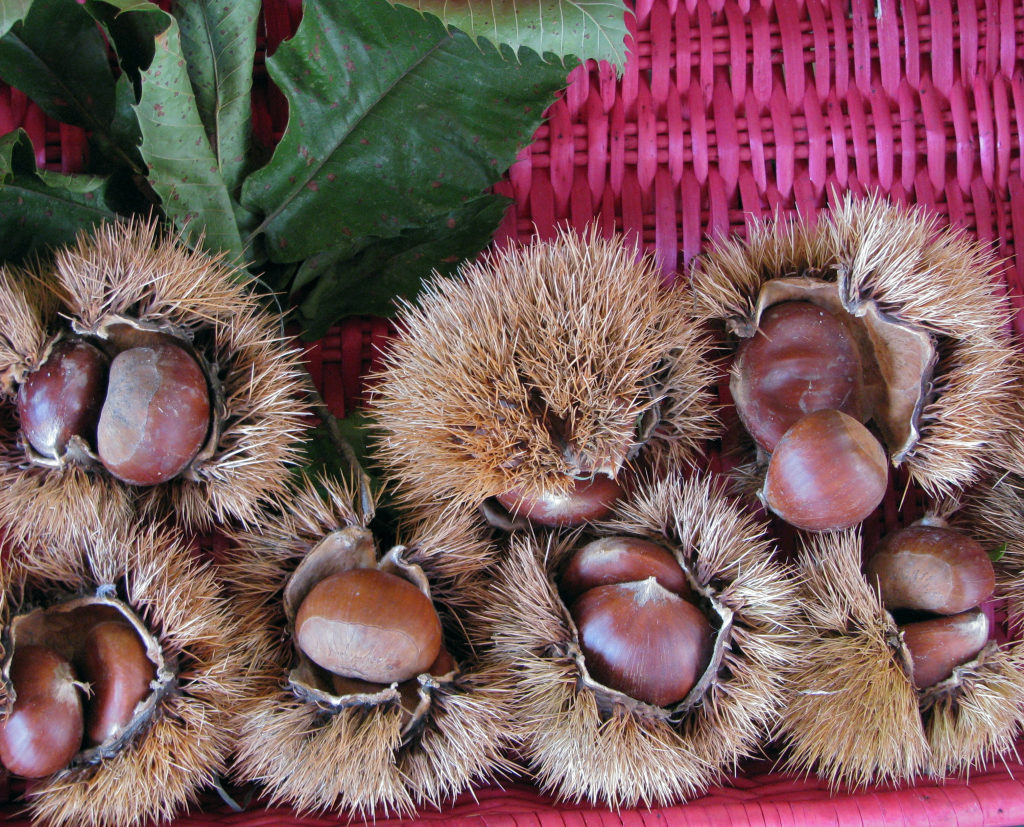 Dried chestnuts can be boiled, or the dried nuts ground up into flour and used in a variety of dishes, such as pasta or baked goods. I’ve been looking to find naturally gluten free options for our clients with dietary restrictions, and chestnut flour is a great option. Here in Italy, I can pick up chestnut flour in my local grocery store, in the US you can find it on line through various gourmet stores.
Dried chestnuts can be boiled, or the dried nuts ground up into flour and used in a variety of dishes, such as pasta or baked goods. I’ve been looking to find naturally gluten free options for our clients with dietary restrictions, and chestnut flour is a great option. Here in Italy, I can pick up chestnut flour in my local grocery store, in the US you can find it on line through various gourmet stores.
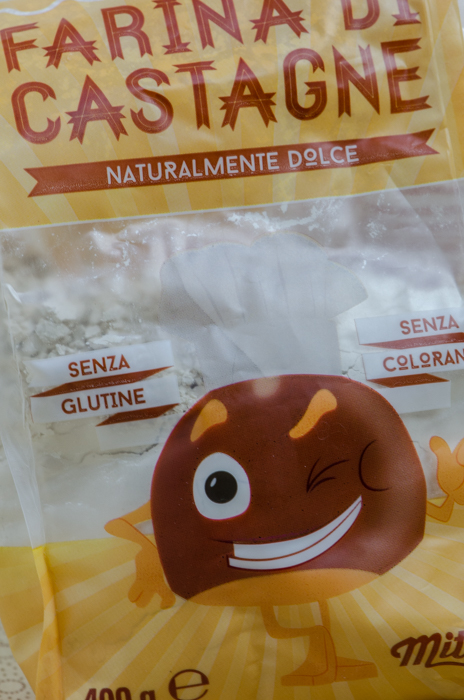 Castagnaccio is a chestnut cake with origins in the area around Lucca, Tuscany. The original recipe contains no sugar or sweeteners like honey, just chestnut flour, nuts, raisins and olive oil. It is a bit of an acquired taste. I looked at a couple of recipes designed to be more ‘approachable’ and developed this version. I kept the rosemary flavor of the authentic recipe by infusing a bit of rosemary in the honey wine syrup topping; you can omit if rosemary in your dessert does not appeal.
Castagnaccio is a chestnut cake with origins in the area around Lucca, Tuscany. The original recipe contains no sugar or sweeteners like honey, just chestnut flour, nuts, raisins and olive oil. It is a bit of an acquired taste. I looked at a couple of recipes designed to be more ‘approachable’ and developed this version. I kept the rosemary flavor of the authentic recipe by infusing a bit of rosemary in the honey wine syrup topping; you can omit if rosemary in your dessert does not appeal.
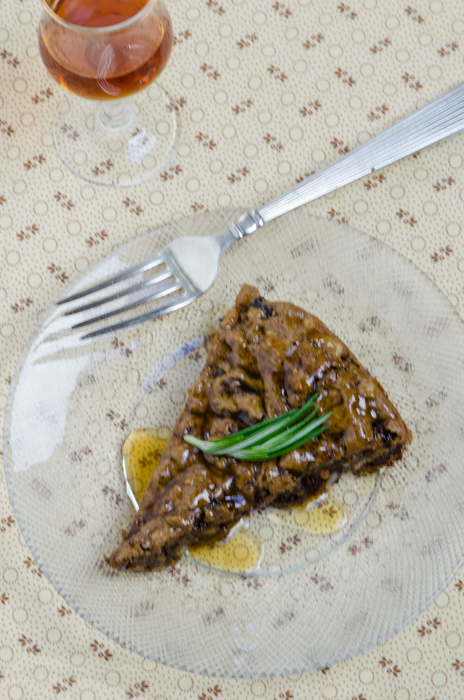
Castagnaccio
Makes one 9” cake
2 1/2 cups chestnut flour
1 teaspoon sea salt
1 tablespoon baking powder
1 tablespoon cocoa
2 tablespoons granulated sugar
1/4 cup dark brown sugar
3 eggs
1/4 cup chestnut honey
1/4 cup extra virgin olive oil
3/4 cup dried cherries
1 cup walnuts, toasted and chopped
1/3 cup pine nuts, toasted
For syrup
1/2 cup chestnut honey
1/4 cup vin santo
1 sprig rosemary
Preheat the oven to 300°F.
Sift the dry ingredients – the chestnut flour, salt, baking powder, cocoa and sugars – through a sieve into a large mixing bowl. Whisk to combine.
In a small bowl, whisk together the eggs, honey and olive oil. Pour into the dry ingredients and stir to combine. The batter will be thick and very sticky. Add the cherries and the toasted nuts and mix well.
Brush a little olive oil to coat the inside of a 9” springform pan. Transfer the cake dough to the pan, using damp hands or the back of a spoon to pat the dough out to fill the pan.
Place in the warm oven to bake until done, approximately 20 minutes.
Combine the 1/2 cup chestnut honey and vin santo in a smalll saucepan and bring to a boil. Add the rosemary sprig and simmer for 2 minutes. Remove from heat.
When the cake is done, remove from the oven and immediately brush with some of the honey syrup. Allow to cool, then remove from the springform pan. Brush with a bit more syrup, cut into pieces and serve, drizzled with a bit more syrup. Enjoy with a glass of the Vin Santo.

One Response to Castagnaccio – Chestnut Cake